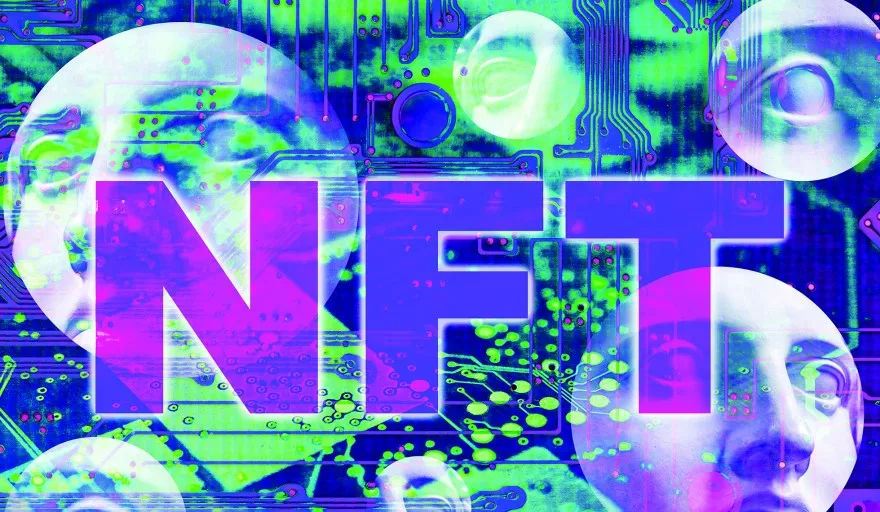Global NFT sales are exploding, and this is just the beginning of an even bigger surge for the crypto market in Asia.
THE LATEST CRYPTO CRAZE
The NFT boom has caused the world to sit up and take notice.
Short for non-fungible tokens, NFTs are cryptographic assets stored on a blockchain, each distinguished from one another by their own identification codes and metadata.
As such, each NFT carries its own individual value, is uniquely identifiable, can’t be replicated, and can’t be traded or exchanged at equivalency – an unprecedented shift in the dynamics of the crypto model. Put simply, they are virtual one-of-a-kind artworks.
This is where NFTs differ from fungible tokens such as cryptocurrencies, which are identical to each other and therefore can be used for commercial transactions. One Bitcoin, for example, is always equal in value to another Bitcoin.
Just like Bitcoin, however, ownership details are assigned to each NFT, easing identification and the transfer of tokens between holders.
Indeed, NFTs can be used to tokenise real-life pieces of art or real estate assets, allowing them to be bought, sold, and traded whilst minimising the possibility of fraud, and can even come to represent the identities or property rights of an individual.
DEMAND FOR DIGITAL
Asia has emerged at the forefront of the global NFT phenomenon with southeast Asians dominating NFT-based web traffic, especially from the likes of the Philippines, Thailand and Malaysia.
The continent was initially slow to grasp the potential of NFTs when they began to rise to prominence in 2020 with the astronomical success of NBA Top Shot, an online marketplace licensed by the National Basketball Association that allows users to buy, sell and collect NBA scoring moments.
But Asia has been swift to catch up since, spearheaded by Hong Kong-based Animoca Brands, a blockchain gaming business now valued as US$5 billion and a prolific investor in NFT-related blockchain companies.
Singapore-based blockchain entrepreneur Vignesh Sundaresan, otherwise known as MetaKovan, further helped to put NFTs on the map with his eyewatering US$69 million purchase of an NFT collage last year, coming in at second on the all-time list of most expensive non-fungible tokens.
Asia is likely to become the largest market for NFTs within the next couple of years, as interest in these digital assets ignites the worlds of art, fashion, music and sport.
It comes as daily life is driven evermore by technology; nowhere is this better evidenced than in Asia, where China, Singapore and Korea lead the way in terms of tech adoption, and there is no reason why NFTs won’t follow suit.
With a growing middle-class of digital natives that are younger in demographic and stronger in spending power, there is bound to be a continued increase in demand for digital investments and tech-based commodities such as NFTs.
Business models are also changing for the better, chiefly in creative industries which are commanding increased socio-economic and cultural importance in the continent. For instance, Asian musicians and artists are able to provide collectors and buyers with an enhanced virtual experience, can prove that their works are authentic, and can receive royalties for every resale, all in all allowing them to profit from the platform.
The exponential rise in digital asset investments has already prompted South Korea to contemplate becoming the first country in the world to tax select NFTs, with the country’s Financial Services Commission (FSC) reportedly planning to impose a 20 percent tax on virtual asset incomes that exceed ₩2.5 million.
In Malaysia, meanwhile, the Inland Revenue Board (IRB) is also eyeing the possible taxation of transactions, such has been the lucrative development of the NFT market.
ADVANTAGES OF NFTS
- Ownership – Each NFT is owned only by the individual and can’t be distributed among multiple owners.
- Authenticity – NFTs are a way to verify if content is genuine and creates a record of ownership on the blockchain.
- Transferability – With a wide range of options for trading, it is easy to freely exchange NFTs on certain markets.
- Financial – Funds from sold content go directly to the creator, who can also receive royalties by setting up smart contracts.
- Inclusive growth – Bringing content creators into one ecosystem can facilitate new avenues of growth for all participants.
POTENTIAL RISKS
Perhaps natural for a market that is still considered to be in its infancy, there remains pitfalls within the NFT space to be wary of.
Critics will question whether or not NFTs have any real value, citing them as highly speculative purchases inflated by pop culture and the addictive buzz of crypto mania. It remains to be seen whether NFTs are a good long-term investment or just another passing trend, however the rate at which the market has grown cannot be ignored.
And whilst investors can buy and single-handedly own these non-fungibles, they are not necessarily purchasing the copyright. It means that even though NFT holders have the prestige of owning a specific token, there is still nothing to stop copies of it being pasted on the internet and across social media, essentially showing off and sharing an asset that may have cost millions.
Further, the widespread trading of NFTs and other blockchain-based assets is not necessarily the most eco-friendly endeavour. Any record entered into the Ethereum blockchain, for example, requires a substantial amount of energy in order to power the computing processes, and so the environment remains a hot topic in the community.
Despite the drawbacks, which in time will inevitably be patched up, it’s clear that this latest crypto craze is now firmly on the radar of Asian governments, corporations and citizens alike.





















